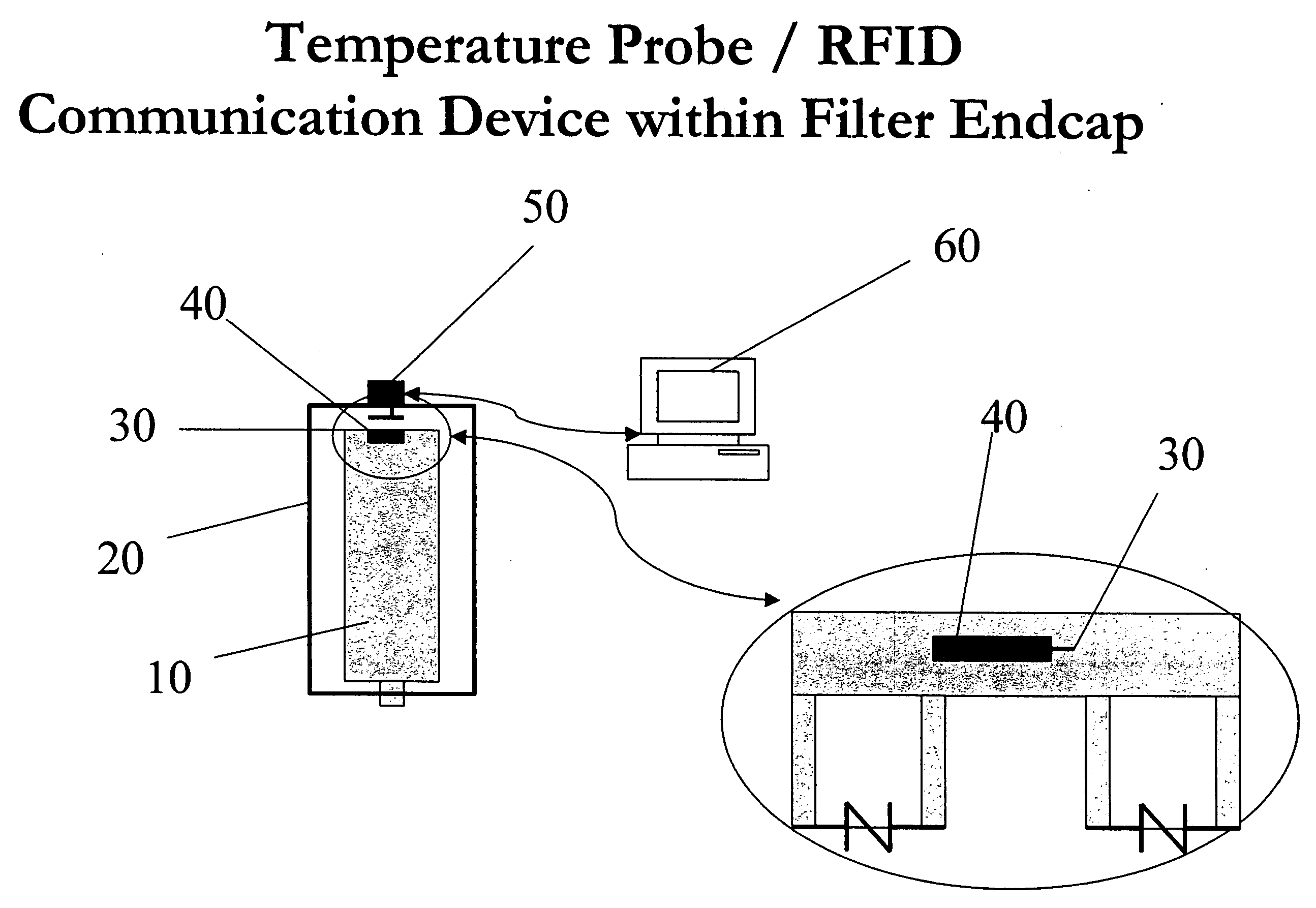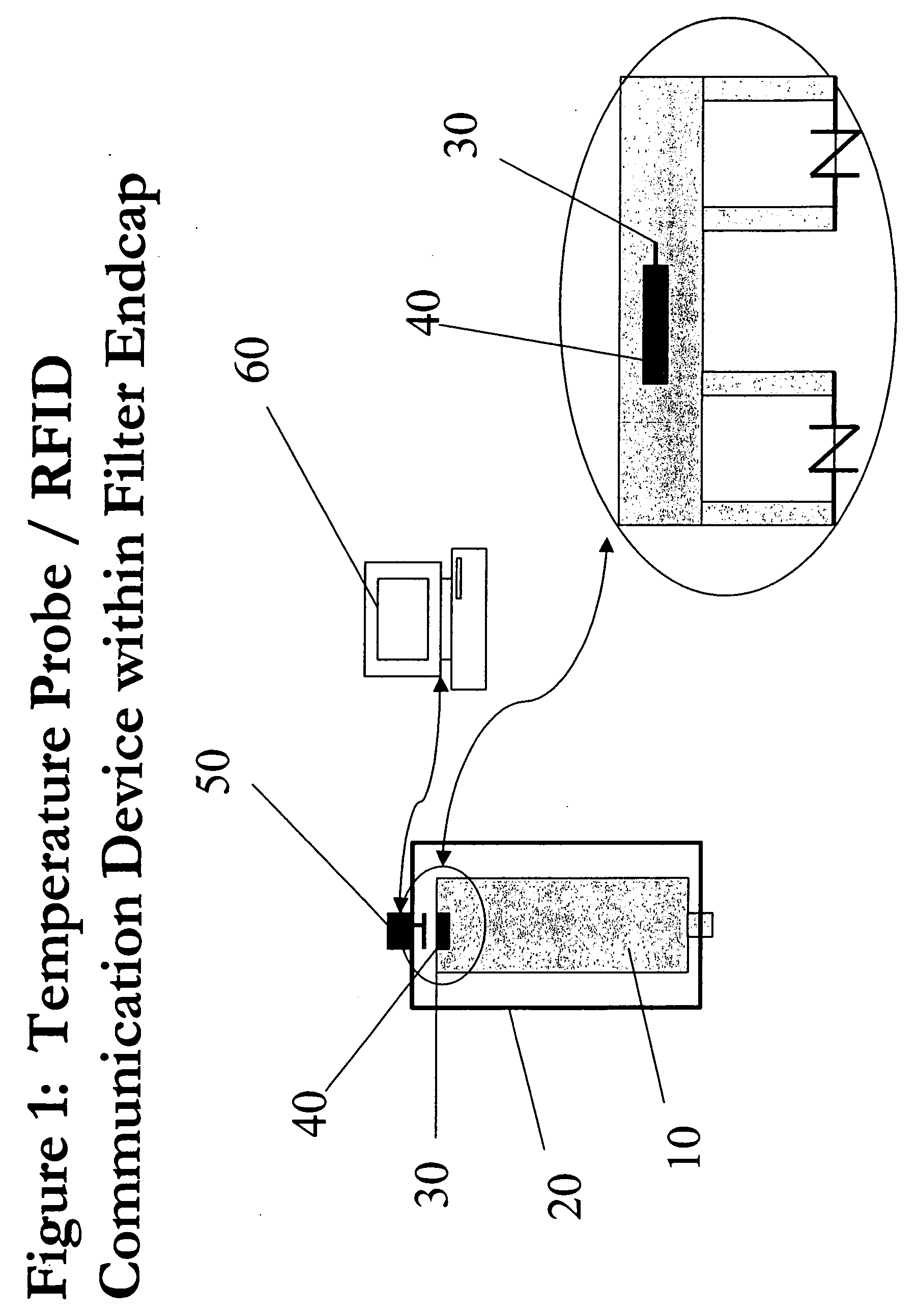Filter with memory, communication and temperature sensor
- Summary
- Abstract
- Description
- Claims
- Application Information
AI Technical Summary
Benefits of technology
Problems solved by technology
Method used
Image
Examples
Embodiment Construction
[0011]FIG. 1 illustrates a representative filtering system in accordance with the present invention. The filter element 10 is enclosed with a housing 20. The filter element can be simply a porous material, such as pleated paper or PVDF (Polyvinylidene fluoride) membrane. Alternatively, the filter element may comprise a frame, such as of plastic, and a porous material. Located in close proximity of, and preferably embedded in, the filter element 10 is a temperature sensor 30. This sensor 30 is capable of generating an output, which varies as a function of the surrounding temperature. This output can be in the form of an analog voltage or current, or can be a digital value. In the preferred embodiment, the output varies linearly with temperature, however this is not a requirement. Any output having a known relationship, such as logarithmic or exponential, to the surrounding temperature, can be employed. In such a situation, a transformation of the output can be performed to determine ...
PUM
| Property | Measurement | Unit |
|---|---|---|
| Temperature | aaaaa | aaaaa |
| Pressure | aaaaa | aaaaa |
Abstract
Description
Claims
Application Information
 Login to View More
Login to View More - R&D
- Intellectual Property
- Life Sciences
- Materials
- Tech Scout
- Unparalleled Data Quality
- Higher Quality Content
- 60% Fewer Hallucinations
Browse by: Latest US Patents, China's latest patents, Technical Efficacy Thesaurus, Application Domain, Technology Topic, Popular Technical Reports.
© 2025 PatSnap. All rights reserved.Legal|Privacy policy|Modern Slavery Act Transparency Statement|Sitemap|About US| Contact US: help@patsnap.com


